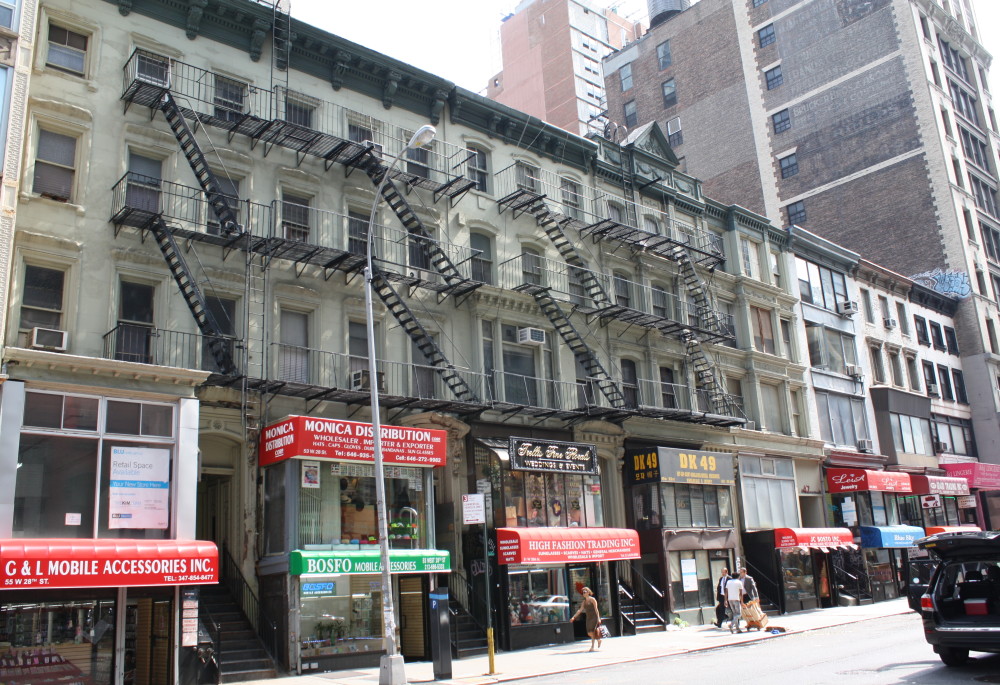The name refers to rowhouses at 45-57 West 28th between 5th and 6th Avenues (as well as several on the south side same block) which were home to a concentration of music publishers from 1890-1910. The row houses date back to the 1850-70s and are still standing.
Tin Pan Alley was the collection of New York City music publishers and songwriters who dominated the popular music of the United States in the late 19th century and early 20th century.
Many songwriters and music publishers once congregated on the street nicknamed Tin Pan Alley. Young and Meyers say the name may have come from all the dissonant sounds that poured out of the buildings. The many musical styles that were woven together here became popular with the American public, thanks to performances on vaudeville stages, in minstrel shows and at concert halls.

George Gershwin got his start here, as did Harry Warren, an Italian immigrant who went on to write “Chattanooga Choo Choo” and “Lullaby of Broadway.” Eventually music publishers and songwriters began to move on to other locations, such as Times Square. Tin Pan Alley is not a protected historic district, but it's a great reminder of America’s musical past.
From the 1890s to around 1910, this row of structures, which mostly date to the 1850s through the 1870s, was home to influential music publishers and songwriters’ studios. The row is known as the birthplace of the modern music industry, where sheet music was first developed, categorized into genres and marketed as a commodity for mass distribution.
Publishers also hired piano players to demo songs for high-profile performers, launching the careers of many American songwriters, including Scott Joplin, George M. Cohan, Irving Berlin and (possibly) George Gershwin. Famous tunes originally published here include Albert Von Tilzer's "Take Me Out to the Ballgame" (1908) and one of the first ragtime compositions, Ben Harney's "You've Been a Good Old Wagon, But You've Done Broke Down" (1896), now a Blues standard.
The origin of the name “Tin Pan Alley” is not clear, though many attribute it to the sound of pianos ringing out into the street. By 1911, the industry had moved uptown. Plans to demolish the buildings never came to fruition, in part due to the Great Depression, and the area was spared from urban renewal initiatives in the 1950s and 1960s. |


